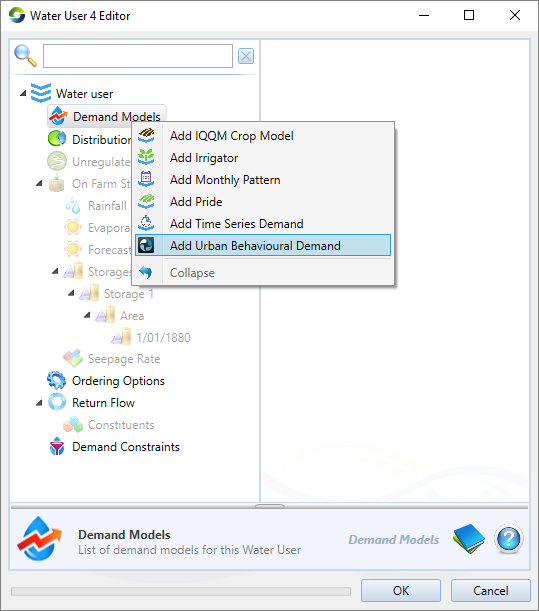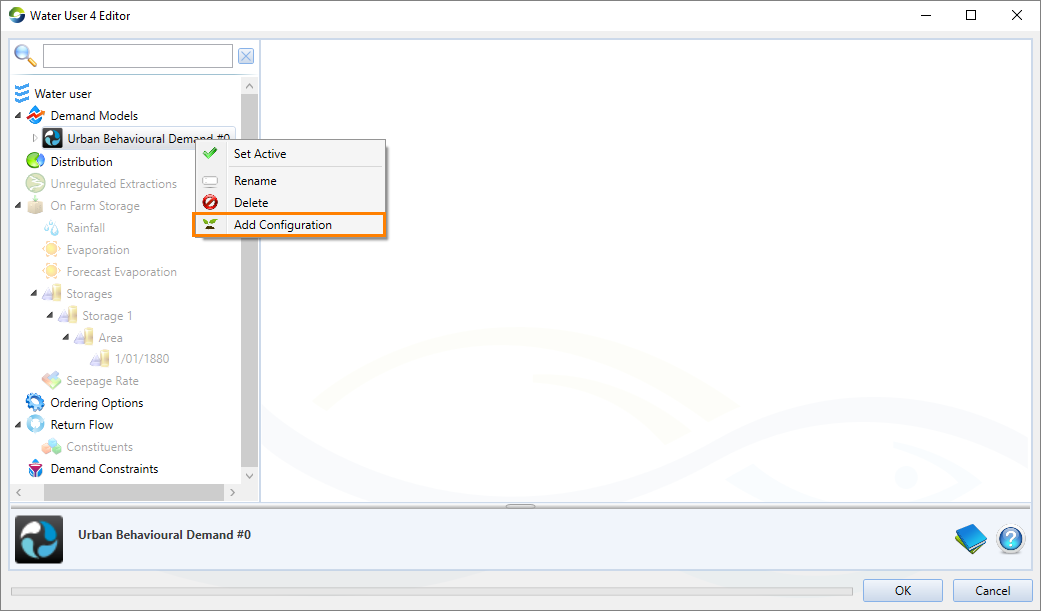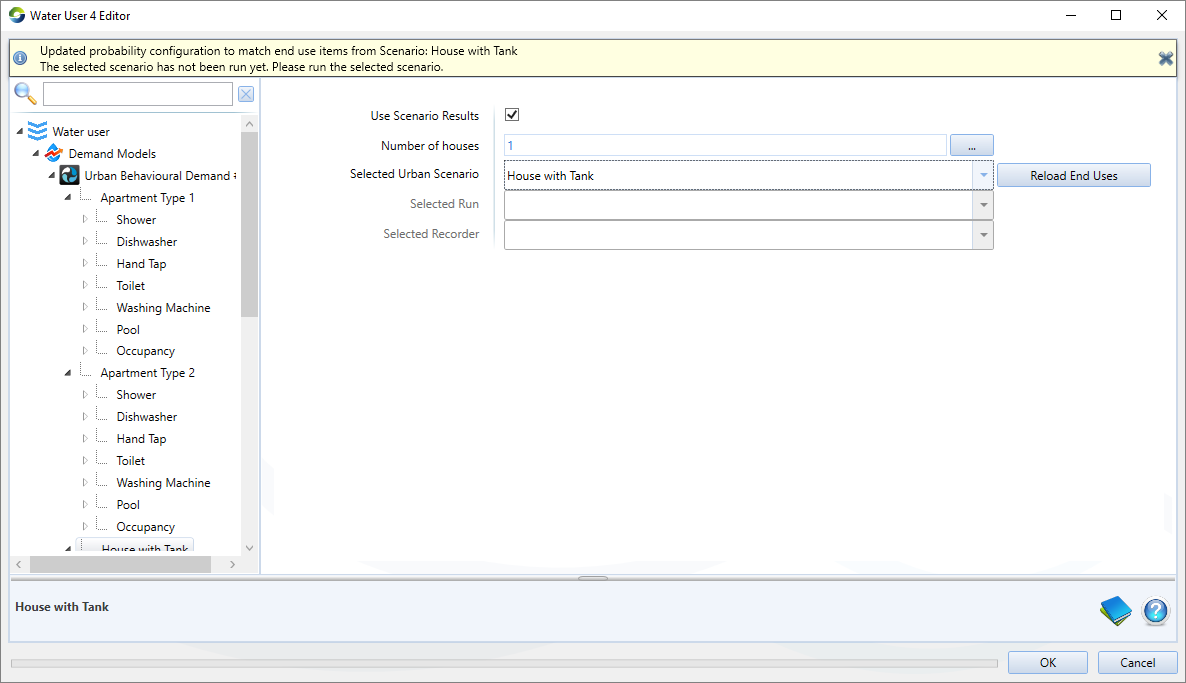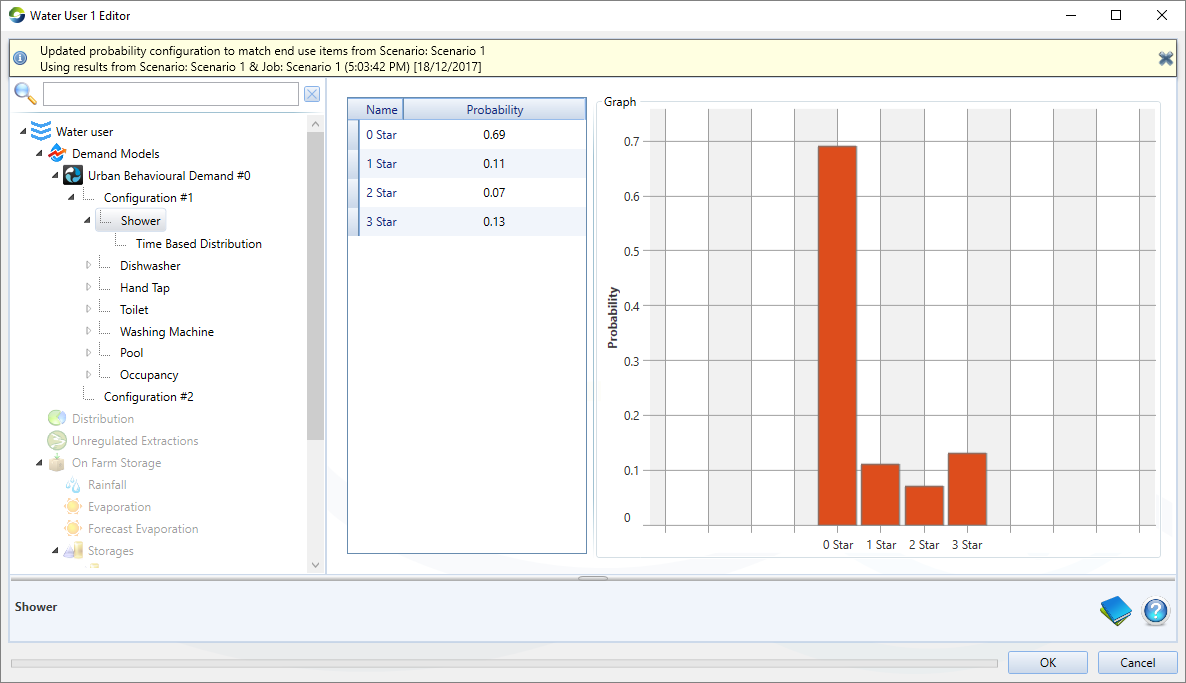Note: This is documentation for version 4.11 of Source. For a different version of Source, select the relevant space by using the Spaces menu in the toolbar above
Urban Water User Node
Adding Configurations
One or more "Configurations" are created for the Urban Behavioural Demand model to represent the water use by different household types (e.g. apartments, detached house with rainwater tank, etc). For each configuration, the user:
- specifies the number of dwellings represented
- connects to urban combination database for that dwelling type
- specifies the distributions of appliances and occupancy in those dwellings
Right Click the Urban Behavioural Demand model and select Add Configuration.
Configure the number of dwellings the Urban Water User is to represent, the Urban Scenario and the urban combination database to use for calculating household demands. If the Urban Combination simulation has not been pre-run appropriately a warning will appear.
Appliance & Occupancy Distributions
The distributions of occupancy and appliances for each configuration. This is similar to the Sampled Appliances & Occupancy configuration in the Urban Scenario type.
The Urban Demand Model will take the average demand generated from the supplied urban combination database. This is best explained with an example:
If there are three star-ratings for showers included in our urban combination database run, the demands for each are imported into the Source Scenario and are available in the Urban Behavioural Demand model configurations. The Urban Behavioural Demand model is configured to represent 4 dwellings and the distributions of shower rating types selected for the configuration are: one star: 50%, two stars: 25%, and three-star: 25%. The Urban Behavioural Demand model would call the demand results for one star showers twice (for two dwellings), two stars once and three star once, summing all of them together to create a demand for all four houses.



